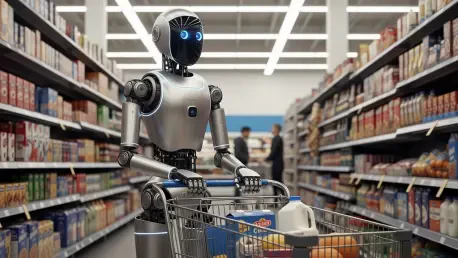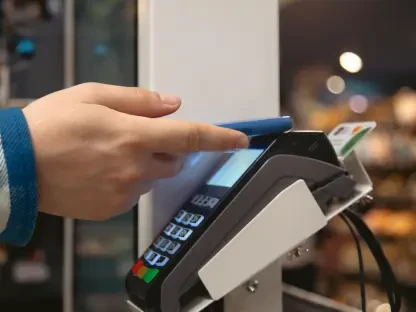Imagine walking into a grocery store where smart carts predict your shopping list, AI tailors product suggestions to your health goals, and prices adjust in real-time to match your budget. This isn’t a distant dream but a reality unfolding in the grocery industry, as showcased at a major industry event held from September 28 to October 1 at Mandalay Bay in Las Vegas, Nevada. Drawing over 5,000 senior executives from retailers, brands, and tech companies across more than 50 countries, this gathering served as a pivotal platform for innovation in grocery and consumer packaged goods (CPG) sectors. With digital commerce, consumer engagement, and transformative technologies at its core, the event tackled urgent challenges like AI integration, evolving shopper priorities, and economic constraints. It set the tone for a new era defined by efficiency, wellness, and affordability, offering a glimpse into how the industry is adapting to a fast-changing landscape.
Key Takeaways: Themes Shaping the Industry
The conference buzzed with insights from over 150 global speakers, distilling the future of grocery retail into four critical themes: AI-powered operations, deep understanding of shopper needs, retail media as a burgeoning revenue source, and the creation of adaptable, forward-thinking organizations. These discussions, spanning keynote addresses, panel sessions, and interactive workshops, painted a comprehensive picture of an industry at a crossroads. Technological advancements and consumer shifts dominated conversations, with each theme reflecting a unique piece of the puzzle retailers must solve to stay competitive.
Beyond the high-level ideas, the event offered a dynamic mix of formats, from thought-provoking talks to hands-on technology demonstrations. Attendees witnessed firsthand how innovation is no longer just a buzzword but a tangible force reshaping everything from supply chains to customer interactions. This diverse lineup of activities underscored the urgency for grocery leaders to act swiftly on emerging trends.
AI’s Central Role: Transforming Operations
A standout focus was the undeniable shift toward artificial intelligence as the foundation of grocery retail. In a powerful keynote, Michelle Cucchi from Algolia emphasized that AI must permeate every aspect of the business, from enhancing shopper engagement to optimizing inventory and slashing costs. Specific cases, like AI-driven search tools increasing conversion rates by over 50%, illustrated the technology’s immediate impact, while cautionary tales of past retail failures, such as A&P, served as a reminder that ignoring modernization is a fatal misstep.
The implications of AI extend beyond mere efficiency. Industry experts pointed out that without embedding this technology into core strategies, retailers risk losing ground to more agile competitors. The message was clear: AI isn’t an optional upgrade but a survival tool in a market where precision and speed define success. This perspective resonated across sessions, highlighting a collective push for seamless integration.
Challenges remain, particularly with outdated systems hampering progress. Speakers noted that many warehouse management tools, some decades old, struggle under the weight of makeshift fixes, slowing down innovation. Modern solutions like robotics and cloud-based platforms were presented as vital steps to overcome these hurdles, ensuring operations keep pace with digital demands.
Consumer Trends: Balancing Wellness and Budget
Panel discussions delved into the complex shifts in consumer behavior, spotlighting a dual emphasis on health and affordability. Experts from Kantar and NielsenIQ highlighted how factors like the adoption of GLP-1 medications for weight management and a 28.5% grocery price hike since earlier this decade have reshaped shopping habits. This tension between wellness and cost-consciousness has pushed retailers to rethink their offerings.
Specific strategies emerged, such as Whole Foods expanding private label lines to maintain high wellness standards while addressing price sensitivity. The role of AI in product discovery was also a hot topic, with debates on how it transforms shopping across physical stores and digital platforms. Retailers are grappling with how to align these tools with economic realities while meeting heightened expectations for healthier options.
These conversations revealed a broader struggle within the industry to adapt to external pressures. With regulatory changes like reduced SNAP benefits adding to financial strain for many consumers, the need for innovative pricing models and value-driven products has never been more apparent. The panels underscored that flexibility in strategy is key to retaining customer loyalty in this environment.
Practical Insights: Workshops and Live Demos
Beyond theoretical discussions, the event offered hands-on learning through workshops and interactive sessions that brought concepts to life. Attendees engaged with AI tools, automation solutions, and data strategies tailored for retail transformation, gaining practical knowledge on implementation. These sessions focused on real-world applications, bridging the gap between idea and action.
One notable activity explored scaling automation while maintaining cultural alignment, drawing on insights from Simbe Robotics. Participants collaborated on exercises to design unified data environments for agentic AI, learning how to streamline operations across departments. The emphasis was on actionable steps, equipping leaders with frameworks to apply immediately within their organizations.
The interactive nature of these sessions fostered a sense of urgency and empowerment. By working through challenges like workforce adaptation and technology integration in a group setting, attendees left with concrete plans to tackle inefficiencies. This focus on practicality ensured that the event wasn’t just about inspiration but about sparking measurable change.
Innovation on Display: Tech Showcases
Technology took center stage with impressive unveilings that signaled retail’s future. Instacart’s Caper smart carts, now operational in over 100 cities, and Simbe Robotics’ shelf-scanning solutions, deployed globally, highlighted automation’s sweeping impact on enterprise operations. These tools demonstrated how mundane tasks can be revolutionized for better efficiency.
Exhibitions also showcased AI-driven personalization platforms and retail media systems, illustrating their power to elevate customer experiences while opening new revenue channels. Metrics like sales lifts tied to these innovations provided hard evidence of their value, reinforcing the idea that technology and retail are increasingly inseparable.
The showcases weren’t just about flashy gadgets but about proving return on investment. Vendors and retailers alike emphasized scalability, showing how these solutions can grow with business needs. This focus on measurable outcomes underscored a shift toward pragmatic adoption of cutting-edge tools in an industry often cautious about change.
Looking Ahead: Lasting Impact of the Event
Reflecting on the event, it became evident that AI and automation are non-negotiable for grocery retail’s future, while consumer demands for health and value continue to redefine strategies. Retail media emerged as a significant growth area, and organizational unity stood out as a prerequisite for success. These takeaways framed a roadmap for navigating an increasingly complex market.
Industry analysts, including those from Coresight Research, predict growing market concentration in the US grocery sector, driven by margin pressures and technological adoption. Smaller players may merge with larger chains or carve out niche roles, creating a stratified competitive landscape. Retailers must balance innovation with accessibility to avoid alienating cost-conscious shoppers while pushing boundaries.
The event concluded as a powerful catalyst for progress, having ignited critical conversations and showcased solutions that could shape the industry’s trajectory. Leaders left Las Vegas with a renewed focus on integrating technology thoughtfully, ensuring human insight guides AI’s potential. The next steps involve prioritizing data unification and cultural readiness to sustain momentum. As the sector moves forward, fostering collaboration between retailers, brands, and tech providers will be essential to address economic challenges and meet evolving consumer needs with precision and empathy.









